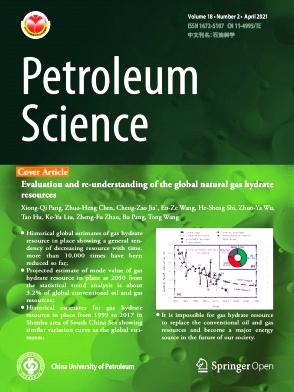Experimental and modeling investigation of zero net liquid flow in hilly terrain pipeline
IF 6.1
1区 工程技术
Q2 ENERGY & FUELS
引用次数: 0
Abstract
Hilly terrain pipeline is a common form of pipeline in oil and gas storage and transportation industry. Due to the hilly terrain influence, the liquid at the elbow of the gathering pipeline is easy to flow back and accumulate to form slug flow, so it is necessary to remove the accumulated liquid by gas purging. In this paper, experiment is carried out in hilly terrain pipelines. Three flow patterns of stratified flow, slug flow and stratified entrained flow are observed. The process of gas purging accumulated liquid is divided into four stages, namely liquid accumulation, liquid rising, continuous outflow and tail outflow. At the same time, the flow pattern maps of each stage are drawn. The pressure drop signal is analyzed in time domain and frequency domain, and the contour map of pressure drop distribution is drawn. It is found that the ratio of range to average value can well distinguish the occurrence range of each flow pattern. Based on visualization, the transition process of slug flow to stratified flow and stratified entrained flow is studied, and the transition boundary prediction model is established. An image processing method is proposed to convert the image signal into a similarity curve, and PSD analysis is performed to calculate the slug frequency. The normal distribution is used to fit the slug frequency, and the predicted correlation is in good agreement with the experimental data.
丘陵地形管道零净液流的实验与建模研究
丘陵地形管道是油气储运行业中常见的管道形式。由于丘陵地形的影响,集输管道弯头处的液体容易回流积累形成段塞流,因此需要采用气体吹扫的方式去除积聚的液体。本文在丘陵地形管道中进行了实验。观察到分层流、段塞流和分层夹带流三种流型。气体吹扫积液的过程分为积液、升液、连续流出和尾流出四个阶段。同时绘制了各阶段的流型图。对压降信号进行时域和频域分析,绘制压降分布等值线图。结果表明,极差与平均值的比值可以很好地区分各流型的发生范围。基于可视化技术,研究了段塞流向分层流和分层夹带流的过渡过程,建立了过渡边界预测模型。提出了一种图像处理方法,将图像信号转换成相似曲线,并进行PSD分析计算段塞频率。采用正态分布对弹塞频率进行拟合,预测相关性与实验数据吻合较好。
本文章由计算机程序翻译,如有差异,请以英文原文为准。
求助全文
约1分钟内获得全文
求助全文
来源期刊

Petroleum Science
地学-地球化学与地球物理
CiteScore
7.70
自引率
16.10%
发文量
311
审稿时长
63 days
期刊介绍:
Petroleum Science is the only English journal in China on petroleum science and technology that is intended for professionals engaged in petroleum science research and technical applications all over the world, as well as the managerial personnel of oil companies. It covers petroleum geology, petroleum geophysics, petroleum engineering, petrochemistry & chemical engineering, petroleum mechanics, and economic management. It aims to introduce the latest results in oil industry research in China, promote cooperation in petroleum science research between China and the rest of the world, and build a bridge for scientific communication between China and the world.
 求助内容:
求助内容: 应助结果提醒方式:
应助结果提醒方式:


